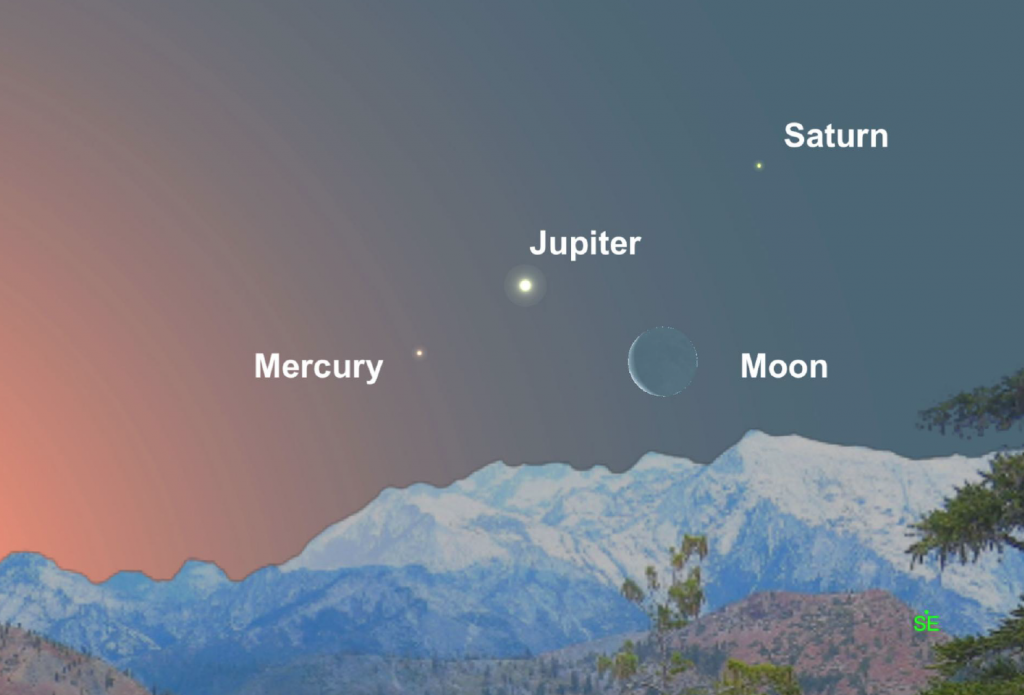Sky Report: March 8 – March 14

This has been true for weeks and remains true today: Mars is the only planet in the evening sky. The earth and Mars were closest six months ago, when the earth, on our inside orbit, passed slower-moving Mars, and we’re now leaving it behind as we race ahead around the sun. Mars remains easily visible as an orange “star” in Taurus, near the true orange star Aldebaran, to Mars’ left. Mars and Aldebaran are exactly the same brightness.
On the 8th Mars is precisely in line with the star cluster Pleiades to the right and Hyades to the left, and Mars is considerably closer to the Pleiades. Use binoculars for the best view.
Stars in a cluster were born together out of a giant cloud of collapsing gas, and all the stars are the same age. The Pleiades stars are about 100 million years old and the Hyades at least 600 million years old. In time, the stars of a cluster drift apart and the cluster “evaporates” but this takes a long time. The Hyades looks bigger mostly because it’s closer – 150 light years vs. 440 for the Pleiades, but the Hyades is also twice the actual diameter of the Pleiades; its stars have had more time to disperse. In another 600 million years it will have “evaporated”, so enjoy it now.
Being close to such easily-visible star clusters lets you chart the progress of Mars night-by-night as it moves eastward against the background of stars, soon leaving both clusters and Aldebaran behind.
Mars sets shortly after midnight and there are no planets visible until Saturn, Jupiter, and then Mercury rise in the southeast shortly before the sun in morning twilight. They’re awfully low and you’ll need an unobstructed horizon to spot them. The thin crescent moon joins them on the 9th and 10th but it too will be hard to see. Again – use binoculars, an essential tool for stargazing. Jupiter and Saturn rise 4 minutes earlier each morning and will be easily visible in the morning sky next month, but Mercury is moving around behind the sun and disappearing from our view. Daylight Time begins early on Sunday morning the 14th and stargazing begins an hour later that night. Sunrise is an hour later too, and that makes it easier for most people to see the stars and planets of the pre-dawn sky.
The Sky Report is presented as a public service by the Stellar Vista Observatory, a nonprofit organization based in Kanab, Utah, which provides opportunities for people to observe, appreciate, and comprehend our starry night sky. Additional information is at www.stellarvistaobservatory.org. Send questions and comments to
John@StargazingAdventures.org.






Comments are closed.